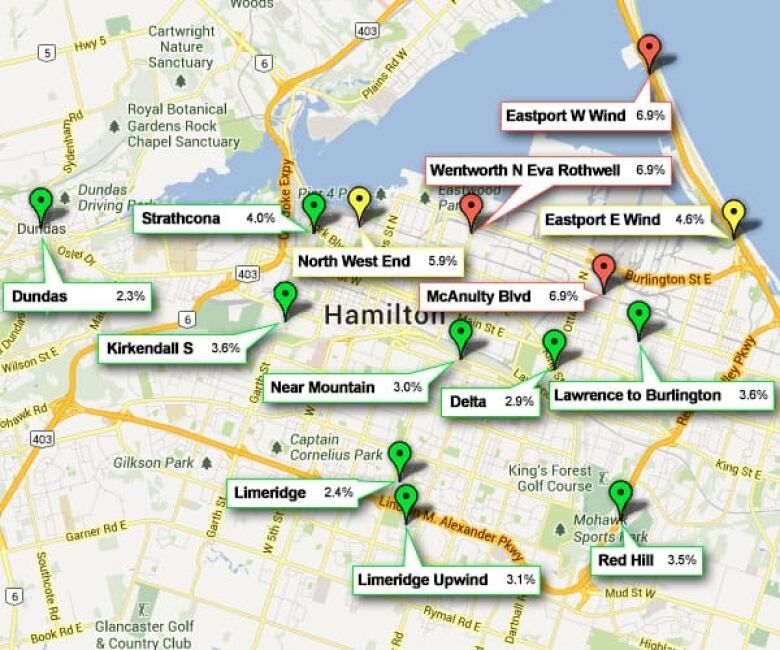Cyclists will monitor air pollution in Hamilton

A local environmental groupwants to make scientists out of cyclists this summer with the goal of creating anair pollution map of Hamilton.
Environment Hamilton is hoping to raise at least $6,000 to buy air quality monitors that cyclists can strap to their bicycles. The data they collect riding around the city will be compiled in a map showing Hamilton's air pollution.
Each monitor and GPS system costs about $600. Environment Hamilton hopes to buy 10 of them, and ideally raise another $30,000 or so for someone to administer the program, executive director Lynda Lukasik said. The project has alreadyreceived $1,200 from Mountain Equipment Co-op.
The technology is small enough to mount on the handlebars of a bicycle.Once mounted, the device will identify the polluton invisible to the naked eye, including how many particles there are, how big the particles are and whether they are attached to any harmful chemicals.
These compact units will actually measurethe pollution in the air thats fine enough to get down into your lungs, she said.
Project to map air quality in Hamilton
The information gathered by multiple monitors will be used to create a map of air quality in Hamilton. Areas with relatively clear air will be shaded green, while those with more particle pollution will be shaded orange or red. The organizationGroup Against Air Pollution and Smog has created a similar map in Pittsburgh, Penn.
Using the map, cyclistsavoid red areas and frequentgreen areas. But the project is about more than changing behaviours, Lukasik said.
We really want this to be a productive way to gather information, andif there are areas in the city that are problematic, to bring together the right people to talk about how we solve those problems.
Data will fill scientific gap

Air quality researcher Dennis Corr saidthe bicycle project mimics work hes been doing for years from a specially equipped van. The technology he uses is more sophisticated and more expensive than what Lukasik wants to buy, but Corr says information gathered by the cyclists will be no less valuable.
Bicycles can travel on bike paths and trails and so on, Corr said. I think [the data] will be useful for filling in gaps where we arent able to go.
What excites Corr more than the extra data is the extra scientists the project will produce. Although they dont have degrees in biology or physics, the cyclists will be playing an active part in research.
Ive realized over the years that, no matter how good your science is, if it stays in the basement or lab, its no good to anybody, he said.
Lukasik hopes to have her volunteer scientists out on the street by June. Environment Hamilton is currentlyapplying for community and government grants.












_(720p).jpg)


 OFFICIAL HD MUSIC VIDEO.jpg)
.jpg)



























































































